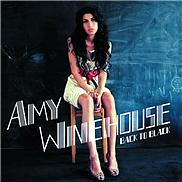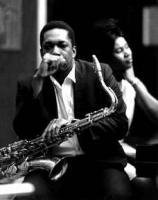
 Forget Kenny Rogers (and really, please forget Kenny Rogers). The musician best deserving the title “The Gambler” is our favorite Sonoma County rancher, Tom Waits. On July 10, Anti- will release Healing the Divide, the long-anticipated album version of a semi-legendary 2003 benefit concert at Lincoln Center. The concert features four performances by Waits with Kronos Quartet and Greg Cohen, including the previously unreleased “Diamond in Your Mind,” which may be familiar from Solomon Burke‘s version. Other performers on the concert album include the throat-singing Gyoto Tantric Choir, sitarist Anoushka Shankar (Ravi’s daughter who isn’t named Norah Jones), the ubiquitous Philip Glass with kora player Foday Musa Suso, and Tibetan flutist Nawang Kechong in a duo with Navajo flutist R. Carlos Nakai. Internationally renowned impresario the Dalai Lama is the opening act. Sales from the album will support efforts of Healing the Divide, an organization founded by humanitarian and fugitive kisser Richard Gere, to provide health services to Tibetan monks and nuns living in refugee settlements.
Forget Kenny Rogers (and really, please forget Kenny Rogers). The musician best deserving the title “The Gambler” is our favorite Sonoma County rancher, Tom Waits. On July 10, Anti- will release Healing the Divide, the long-anticipated album version of a semi-legendary 2003 benefit concert at Lincoln Center. The concert features four performances by Waits with Kronos Quartet and Greg Cohen, including the previously unreleased “Diamond in Your Mind,” which may be familiar from Solomon Burke‘s version. Other performers on the concert album include the throat-singing Gyoto Tantric Choir, sitarist Anoushka Shankar (Ravi’s daughter who isn’t named Norah Jones), the ubiquitous Philip Glass with kora player Foday Musa Suso, and Tibetan flutist Nawang Kechong in a duo with Navajo flutist R. Carlos Nakai. Internationally renowned impresario the Dalai Lama is the opening act. Sales from the album will support efforts of Healing the Divide, an organization founded by humanitarian and fugitive kisser Richard Gere, to provide health services to Tibetan monks and nuns living in refugee settlements.
That may sound like a safe bet. But as Monica Kendrick of the Chicago Reader has noted, Tom Waits’ sales pitch for the album is a new variation on Pascal’s wager. “I’m no fool,†Waits noted, “It’s a spiritual insurance policy. Hell, at my age, the next group I put together, everyone may be playing a harp. All kidding aside, I owed His Holiness a favor. He did all my papers in school.â€
Even Waits’ musical selections for the show hedge his spiritual bets, ranging from “Way Down in the Hole,†a Jesus-thumping gospel blues traditional enough to have been covered by the Blind Boys of Alabama, to the self-explanatory “God’s Away on Business.†As he sings in the latter, “there’s always free cheddar in the mousetrap baby, it’s a deal, it’s a deal.”



 I admit I was predisposed to dislike British soul chanteuse Amy Winehouse’s new album Back to Black until I finally listened to it. How could the future of R&B lie with a troubled diva who vaguely resembles a goth version of Barbarella-era Jane Fonda? But appearances can be deceptive. I played Back to Black right after my beloved
I admit I was predisposed to dislike British soul chanteuse Amy Winehouse’s new album Back to Black until I finally listened to it. How could the future of R&B lie with a troubled diva who vaguely resembles a goth version of Barbarella-era Jane Fonda? But appearances can be deceptive. I played Back to Black right after my beloved  On the 231st birthday of an outrageous experiment in nation-building with a pretty decent soundtrack, I asked our regular Stuck Between Stations contributors to take time from their five-alarm barbecues and traffic jams and hissing summer lawns to answer a simple question: What songs would you like to hear on the Fourth of July, in any style and for any reason? Faster than you can say “
On the 231st birthday of an outrageous experiment in nation-building with a pretty decent soundtrack, I asked our regular Stuck Between Stations contributors to take time from their five-alarm barbecues and traffic jams and hissing summer lawns to answer a simple question: What songs would you like to hear on the Fourth of July, in any style and for any reason? Faster than you can say “
 Against my better judgment, I’m succumbing to the craze among online music fanatics to rewite songs in limerick form. Borrowing the popular idea to rewrite famous
Against my better judgment, I’m succumbing to the craze among online music fanatics to rewite songs in limerick form. Borrowing the popular idea to rewrite famous 
 M.I.A. mania is starting to sweep the world in anticipation of the official release later this month of Kala. The new album follows the thoroughly unclassifiable British/ Sri Lankan aural graffiti artist’s breakthrough Arular album and Piracy Funds Terrorism mixtape, the sources of several of the Zeroes’
M.I.A. mania is starting to sweep the world in anticipation of the official release later this month of Kala. The new album follows the thoroughly unclassifiable British/ Sri Lankan aural graffiti artist’s breakthrough Arular album and Piracy Funds Terrorism mixtape, the sources of several of the Zeroes’